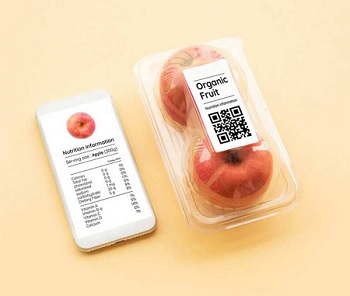
Register with Plumtri!
Register on plumtri as an Individual or as an Organisation to gain access to all of its useful features and remain updated on the latest R&I news, events and funding opportunities.
-
 Welcome to plumtriA platform for Research & Innovation
Welcome to plumtriA platform for Research & Innovation -
 Looking for Funding?Check out the current open calls
Looking for Funding?Check out the current open calls -
 Register today to start receiving our monthly newsletter
Register today to start receiving our monthly newsletter -
 Looking to partner up?Search our list of registered profiles
Looking to partner up?Search our list of registered profiles -
 You have questions on a particular funding programme?
You have questions on a particular funding programme?
Project SMARTSPACK - Closing the Loop on Packaging Materials

Packaging in the consumer product landscape might seem like gloss and glitter, but it serves an essential function: it presents the product to the consumer and safeguards it from harm. However, packaging is often quickly discarded and raises concerns regarding sustainability. Because of this, in the quest for more sustainable packaging solutions, the principles of circular economy are gaining prominence.
Traditional packaging often follows a linear model: you buy something, make use of the product inside, and throw away the packaging without a second thought. However, there is more going on behind the scenes; raw materials are extracted from the environment and transformed into packaging components. For example, plastics, commonly used for packaging, are derived from petroleum, which is a finite fossil fuel resource. Glass packaging is manufactured from raw materials like silica and soda ash, while metals like aluminium for cans come from mined ores.
These extraction processes not only threaten the availability of finite resources but also impose adverse consequences on the environment, especially in the case of mining, highlighting the pressing need for more sustainable and circular packaging solutions. Innovative packaging design can reduce resource consumption and product waste whilst optimising the utility of packaging materials.
The SMARTSPACK project introduces innovative packaging solutions that extend product shelf life, promote durability, and reduce the need for frequent repackaging. By emphasising the reusability and repurposing of packaging, SMARTSPACK aligns with the circular economy’s goal of extending product life and sustainability. Ms Tamasine Camilleri, a research support officer working on the project says: ‘Sustainability has no end goal. The main challenge we find in sustainability is to strike a balance between the sustainable aspect and the functional aspect [of packaging].’ Designers must consider user requirements, convenience, and of course, sustainability to create packaging that meets both consumer and environmental needs.
Furthermore, the global health and economic crises triggered by COVID-19 had a profound influence on consumer attitudes and behaviours, dietary patterns, perceptions of food safety, and the effectiveness of conventional packaging. These challenges underscored the deficiencies of traditional packaging in terms of maintaining product quality, safety, and traceability. The pandemic heightened awareness of food safety and hygiene. Consumers started to pay closer attention to the cleanliness and security of the items they purchased, especially when it came to products exposed to multiple touchpoints during distribution and retail. It became evident that more innovative and responsive packaging solutions were needed to address these challenges effectively.
Keeping it Cool and Fresh with Smart Labels
Imagine the humble carton of milk. Like most perishable products, milk needs to be kept at a constant temperature to avoid spoiling. SMART packaging would mean having elements such as QR codes, radio-frequency identification (RFID), or time-temperature labels which allow the milk to be continuously monitored. These kinds of smart labels ensure that everyone remains informed about the contents and quality of the product inside. For example, if the temperature of the milk rises, the time-temperature labels could send out a warning to the supplier. Meanwhile, the QR code allows the consumer to scan the item to see the milk’s supply chain journey, tracing the path it took to reach your supermarket shelf.
Smart labelling is a key feature of sustainable design, and it’s a field that SMARTSPACK readily embraces, facilitating communication with the user and other stakeholders throughout the product’s lifecycle. Such features can be vital for frozen foods, pharmaceuticals, and other perishable products, where keeping a constant temperature throughout distribution is crucial.
When arguing the importance of smart labelling, Camilleri stated that ‘research has shown that waste generated from food has a much higher impact than the waste generated from packaging. Even though packaging itself might seem inherently unsustainable due to its short life cycle, the packaging itself can prevent unnecessary food waste.’
At times, we purchase items and store them in our cupboards for extended periods. This practice can sometimes result in these items approaching their expiration dates without us realising it. However, the inclusion of time-sensitive or colour-changing labels on product packaging can serve as a valuable solution to this issue.
These labels are designed to change or provide clear notifications as a product nears its expiration date. By doing so, they effectively raise awareness among consumers, prompting them to use the product before it goes to waste. This not only benefits individuals by ensuring that they consume products at their peak freshness but also contributes to reducing overall food waste, which is a significant environmental and economic concern.
Another significant advantage of smart packaging is its ability to enhance product security and integrity. Tamper-evident features provide visual cues that indicate whether the packaging has been opened before reaching the end user. In the case of electronics such as smartphones or laptops, smart packaging can include tamper-evident stickers that indicate whether the device has been opened or repaired. This helps users verify the authenticity and security of the product.
Smart packaging for pharmaceuticals or cosmetics may include indicators that change colour when tampered with. This ensures that the product consumers receive is safe and unaltered. Incorporating tamper-evident features not only safeguards product security but also nurtures consumer confidence in the product, ultimately strengthening brand reputation.
From Waste to Wisdom: A Packaging Revolution
Despite the aforementioned advantages, all types of packaging result in waste, which creates a significant negative environmental impact. Sustainable development seeks to address these challenges by encompassing the three key pillars of sustainability: the economy, the environment, and society. SMARTSPACK holds these tenets to heart at every stage of the packaging’s life cycle, from raw material extraction and processing to manufacturing, product use, and waste management.
Whilst it is true that SMART packaging may carry its own environmental footprint, it offers a pathway to a more sustainable food supply system by endorsing the principles of a circular economy, namely: minimise waste and keep materials in the system. ‘Over packaging is very unsustainable, but it often ties in with the branding and marketing of the product,’ Camilleri says. SMARTSPACK aims to reduce packaging materials whilst maintaining the integrity of the product inside. Additionally, the SMART labels can include instructions on how to dismantle the packaging itself and dispose of the different components in their respective waste bins. Within the realm of packaging development, an opportunity arises for society to embrace more sustainable practices.
Let’s take a frozen packaged meal as an example. Most people are not aware that some plastic trays that hold the food are not recyclable, even when washed, due to special coatings. However, the cardboard outer packaging can be recycled separately, as well as the plastic wrapping.
SMARTSPACK engages consumers by incorporating intelligent features that enhance their product experience, hence adopting a user-centred design (UCD) approach. User preferences, trust, age, and environmental concerns all influence consumer choices when it comes to packaging. Smart labelling, eco-labels, and QR codes play a vital role in communicating the sustainability status of packaging to consumers, helping them make informed decisions when purchasing and discarding products.
SMARTSPACK advocates for conscientious material usage and places a strong emphasis on sustainability. Through the utilisation of recyclable materials and the active promotion of appropriate recycling at the product’s end of life.
The SMARTSPACK project, ‘A User-Centred Smart Platform for Designing and Manufacturing Self-Sanitizing and Sustainable Packaging,’ is still currently in its early stages. Funded by the FUSION R&I: Technology Development Programme 2022 of the Malta Council for Science & Technology, the project aims to develop innovative smart packaging solutions that prioritise user requirements and sustainability. The project is led by Prof. Ing. Philip Farrugia from the Department of Industrial and Manufacturing Engineering at the University of Malta (UM). Other UM members of the research team are Tamasine Camilleri, Dr Ing. Marvin Bugeja, and Dr Margaret Camilleri Fenech. I-Automate (Malta) ltd., Lewis Press ltd., and Multipackaging ltd. form part of the SMARTSPACK consortium.
